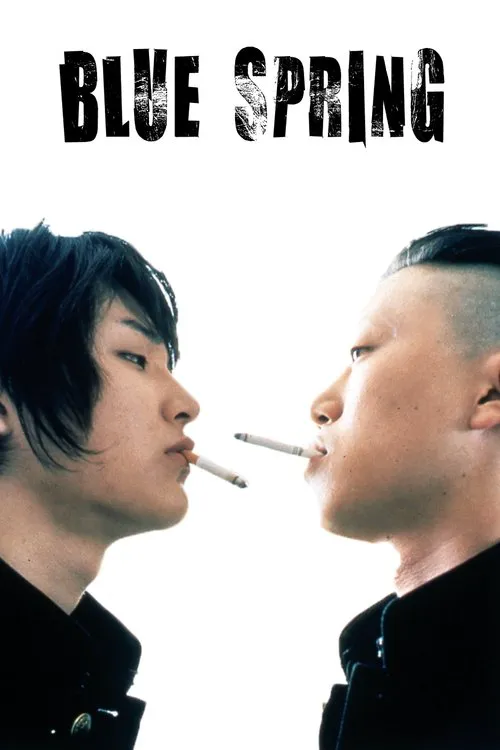Blue Spring

Plot
In the poignant and thought-provoking drama Blue Spring, director Osamu Kaneda brings to life the complex and often dark world of high school gangs in Japan. Kujo, a young man with a strong desire to break free from the violent and hateful cycle that surrounds him, is thrust into a leadership role within his school's gang system. This position of power is meant to be enviable, but for Kujo, it becomes a double-edged sword, making him feel trapped and powerless in the process. As the story unfolds, it becomes clear that Kujo's gang is not just any ordinary group of students - it is a complex hierarchy with strict rules and expectations. Kujo's predecessors have created a culture of violence and fear, with each member expected to maintain a tough exterior and adhere to the gang's code of conduct. Kujo struggles to reconcile his desire to abandon his leadership role with the pressure and expectation that comes with it. The film's title, Blue Spring, is a metaphor for the fragility and impermanence of adolescence. Just as the seasons change, and winter gives way to spring, Kujo's world is in flux, and he must navigate the complexities of his own emotions and desires. His relationships with other characters, including the tough but vulnerable girls who are part of his gang, add depth and nuance to his emotional journey. Kujo's relationships with these girls, particularly with his closest friend and confidant, Natsumi, are fraught with tension and uncertainty. They are drawn to him, but also fear his anger and aggression, which is a result of the pressure to maintain his tough image. Meanwhile, Kujo is drawn to their vulnerability and sensitivity, but struggles to express his own emotions without being seen as weak. This internal conflict is at the heart of the film, as Kujo grapples with the complexities of adolescence and the conflicting desires that come with growing up. Throughout the film, Kujo is forced to confront the harsh realities of his world, where the strong prey on the weak, and violence is a currency that is both feared and admired. He begins to question the values and codes that have been instilled in him, and starts to forge his own path, one that is less driven by a desire for power and more by a need for connection and human understanding. One of the most striking aspects of Blue Spring is its portrayal of the complexities of high school life in Japan. The film offers a nuanced and thought-provoking look at the culture and social dynamics of the country's educational system, where gangs and social hierarchies are a pervasive and often invisible part of everyday life. The film's attention to detail and commitment to realism make it feel both authentic and unsettling, like a slow-burning ember that is about to burst into flames. Ultimately, Blue Spring is a film about the struggles of growing up and finding one's place in the world. Kujo's journey is a poignant and relatable one, as he navigates the complexities of adolescence and grapples with the conflicting desires that come with developing one's own identity. Through its thoughtful characters, nuanced story, and thought-provoking themes, Blue Spring is a powerful and unforgettable film that will leave audiences moved and inspired.
Reviews
Recommendations




